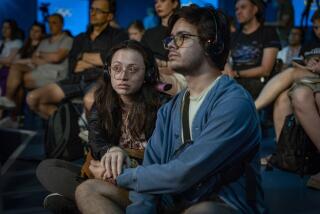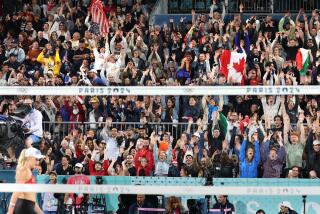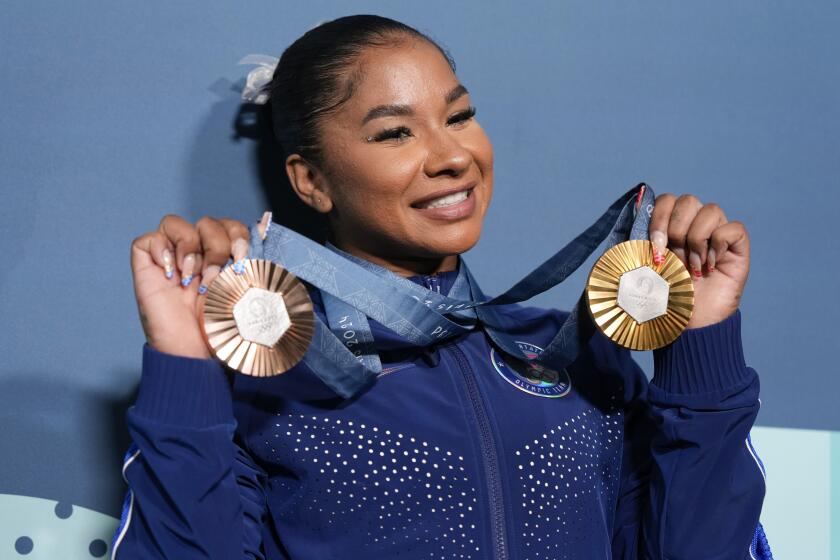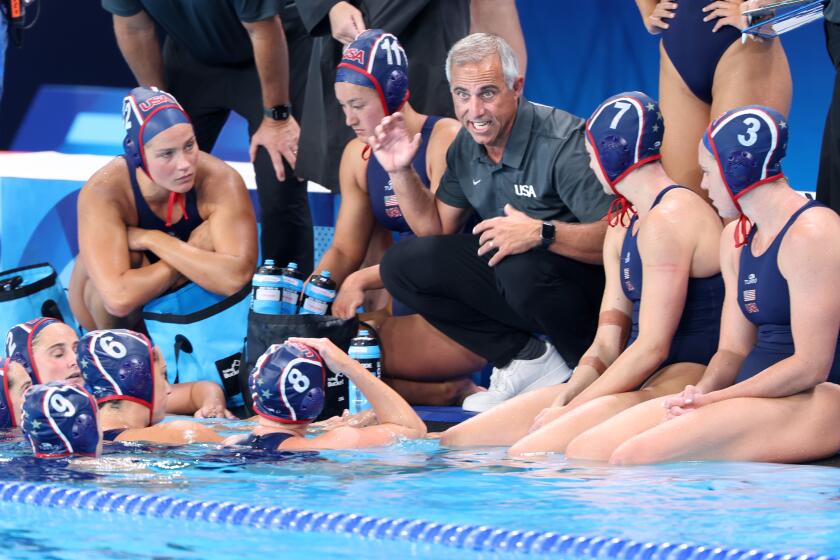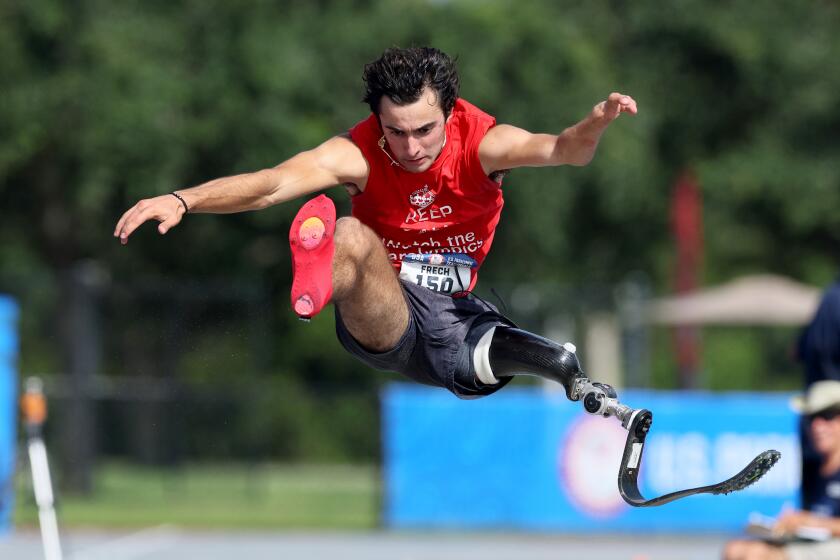Sochi Winter Olympics venues meet with enthusiasm

SOCHI, Russia — The first few days of training on the slopestyle course at the Sochi Olympics did not go smoothly.
Two snowboarders crashed and were carried away on stretchers as much of the field grumbled about treacherous rails and jumps with too much boost. Officials found themselves scrambling to quell a growing storm.
“Just some small adjustments,” course designer Anders Forsell said.
Glitches are common in the days leading up to any Olympic Games. But the slopestyle controversy earlier this week represented a rare bump for Sochi, whose venues have otherwise received glowing reviews.
By most accounts, the Russians have succeeded in building a collection of world-class venues ranging from a glittering ice dome on the coast to a highly technical bobsled run in the nearby mountains.
Even the scenery has impressed.
“It is insane,” U.S. snowboarder Sage Kotsenburg said. “It’s one of the most beautiful places I’ve ever been.”
Like other cities that have hosted the Winter Games, Sochi will divide the competition between two disparate sites.
Hockey, curling and skating will take place near the city, in a “coastal cluster” of five arenas that form a tight circle around Fisht Olympic Stadium, where the opening ceremony will be held Friday evening.
Skiers, snowboarders and sliders will compete about 30 miles to the north in the “mountain cluster,” with its five venues carved into the slopes of the Caucasus range.
The International Olympic Committee is promoting Sochi as one of the most modern Olympics yet.
“It will be a great Games for the athletes,” IOC President Thomas Bach said upon arriving in Russia last week. “They will have state-of-the-art sports facilities.”
Bolshoy Ice Dome: The word “Bolshoy” means “big” in Russian and, with a capacity of 12,000, this represents the larger of two arenas devoted to hockey along the Black Sea.
It was named for the Bolshoi Theatre and has been designed to look like a giant drop of water that turns translucent in the dark.
Shayba Arena: The other hockey venue takes its moniker from the Russian word for puck and the chant — “Shaybu” — that Russian fans yell during games.
Iceberg Skating Palace: This building required 15,000 tons of metal structures, the equivalent of two Eiffel towers. It will host figure skating and short-track speedskating, which can make an odd pair.
Figure skaters like to land their jumps on soft ice; the short-trackers want the surface harder and faster. “But we’re prepared for anything they throw at us,” American racer J.R. Celski said.
Adler Arena Skating Center: With two competition ovals and another track for training, the speedskating venue is about 300 yards long. German athlete Nico Ihle gave the surface a thumbs-up after winning a trial competition there Monday.
“The ice is perfect for me; I can really push and go fast,” he said. “Hopefully the ice stays exactly the same for a week.”
Ice Cube Curling Center: Organizers say this venue’s basic design is supposed to symbolize democracy, but the architecture will mean less to curlers than the humidity, dew and temperature levels that make for consistent play.
“With ice making, something always goes wrong,” said Hans Wuthrich, a Canadian grain farmer who will oversee the rinks.
Up the hill, the mountain events can be just as delicate. Pitch and consistency, wind and visibility — location makes all the difference.
RusSki Gorki Ski Jumping Center: Organizers positioned the normal and large hills at the junction of two ridges to protect the athletes from side winds.
The jumping portion of the Nordic combined will also be held here.
Rosa Khutor Extreme Park: This multifaceted venue with its two stadiums will be home for not only slopestyle but also moguls, aerials, halfpipe, ski cross, snowboard cross, parallel slalom and parallel giant slalom.
Organizers say the site is conducive to quality snow.
Rosa Khutor Alpine Center: Olympic champion and ski architect Bernhard Russi designed the downhill here. The course is known for its variety.
“The layout is one of the coolest in the world, big jumps and stuff,” Canadian skier Jan Hudec said. “It will look cool on TV.”
Laura Cross-Country Ski and Biathlon Center: The Laura is a mountain river marked by a series of falls. It was named for a girl who — according to local folklore — drowned herself in the turbulent waters rather than live with an old prince. Her love, Murat, jumped in after her.
The venue has two stadiums and a ridged circuit that will challenge racers. As Hungarian athlete Karoly Gombos put it: “I think this course is the maximum level of really hard.”
Sanki Sliding Center: The home for bobsled, luge and skeleton features 17 turns over 1,184 icy meters.
After the Vancouver Games, where speed was blamed for the death of luger Nodar Kumaritashvili, the Sochi organizers took care to build a slower track that demands precision.
“The speeds will still be very high,” U.S. skeleton racer Noelle Pikus-Pace said. “But it is a safe track and I don’t think there will be any concerns.”
After what happened at the extreme park during slopestyle training this week, snowboarders are hoping for similar precautions with their course.
One of the injured riders, medal favorite Torstein Horgmo of Norway, broke his collarbone and will miss the Games. Still, Kotsenburg believed that Sochi organizers could have a better layout ready for the medal rounds this weekend.
“We ride and after the first day the riders give feedback on the course,” he said. “Then they work on it.”
Twitter: @LATimesWharton
More to Read
Go beyond the scoreboard
Get the latest on L.A.'s teams in the daily Sports Report newsletter.
You may occasionally receive promotional content from the Los Angeles Times.
